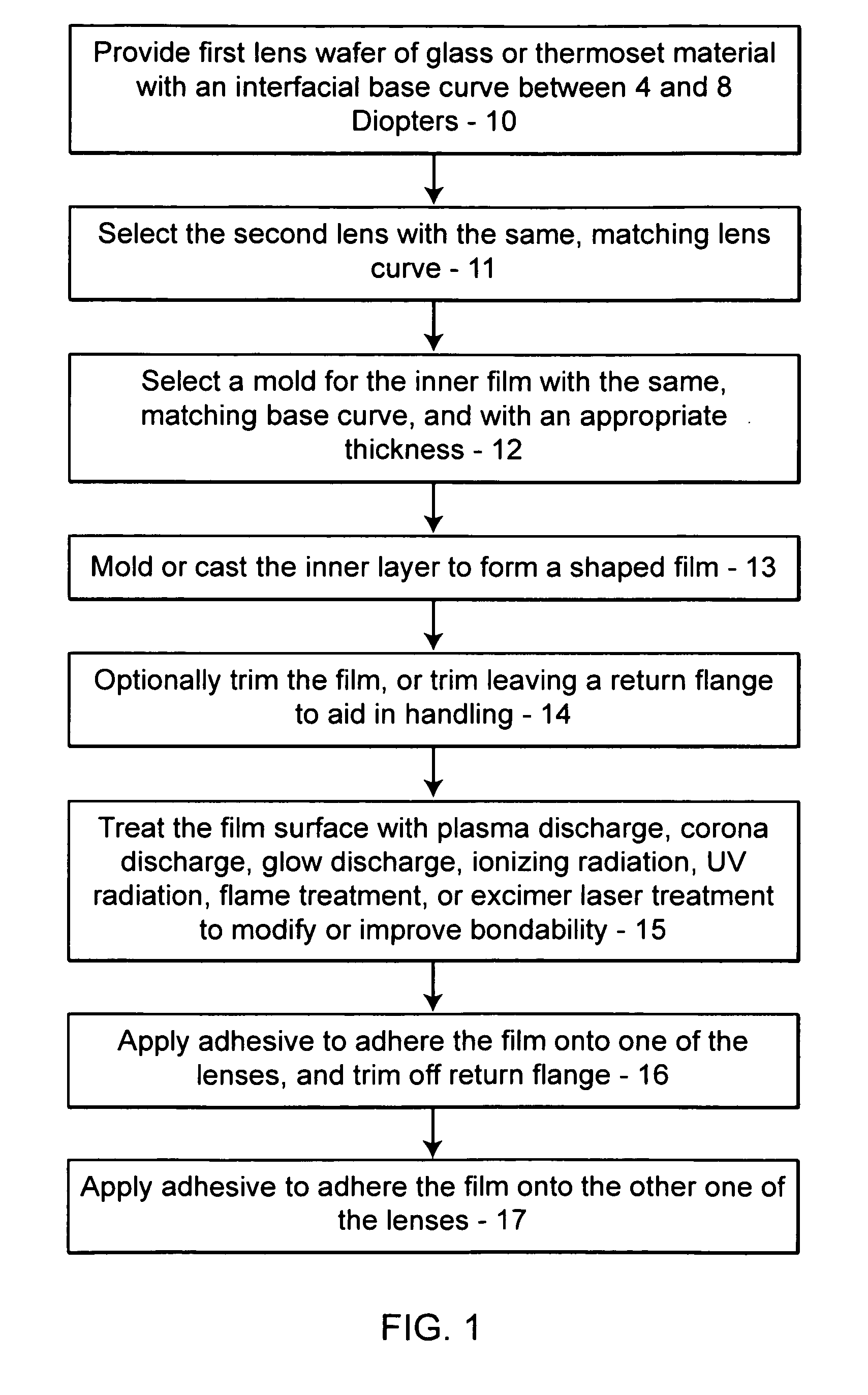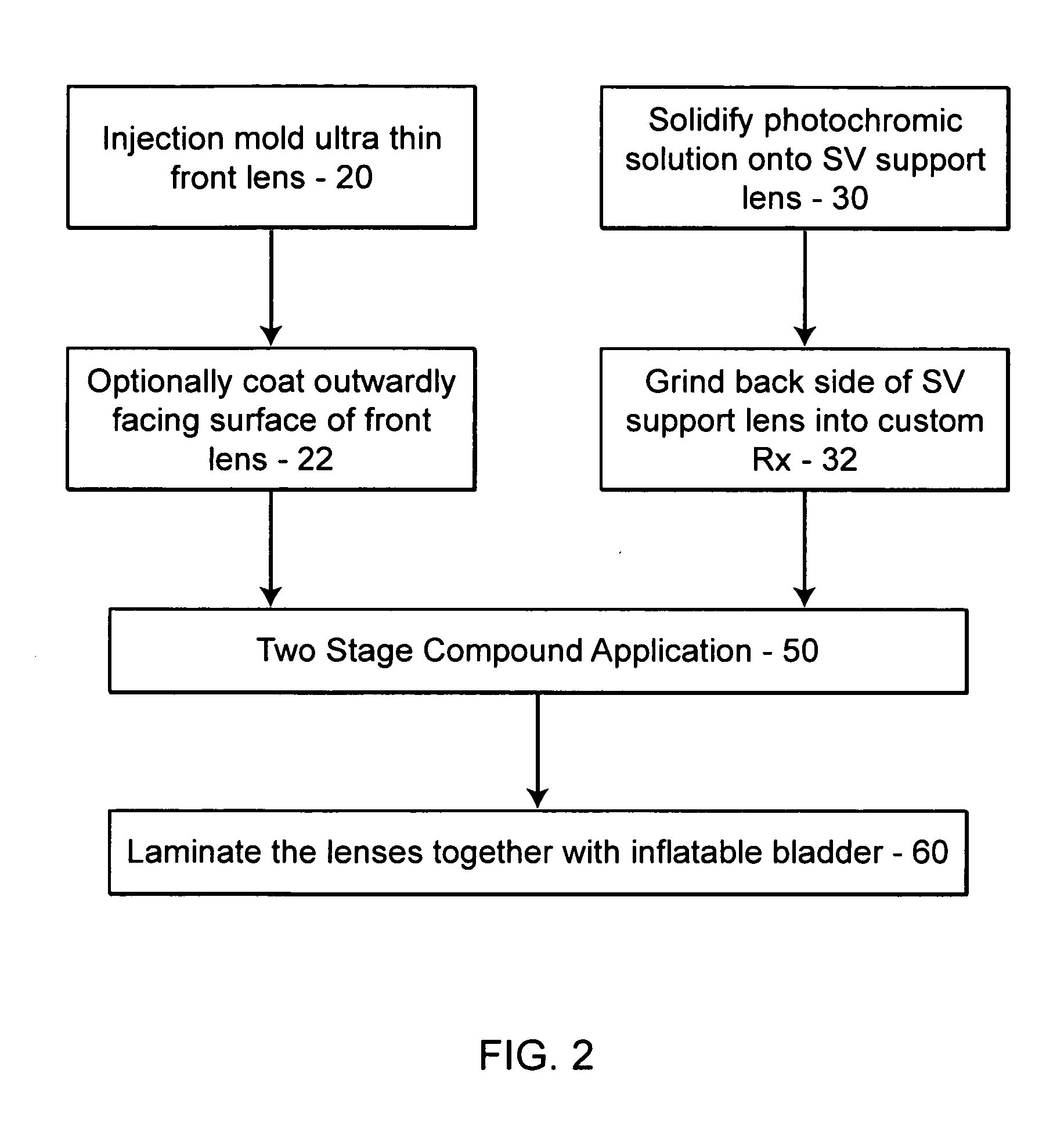Method for producing laminated photochromic lenses
a technology of photochromic lenses and laminated materials, which is applied in the direction of lenses, optics, instruments, etc., can solve the problems of inability to control the thermodynamics of the cooling melt flow and the inability of straight injection molding to fill the mold
- Summary
- Abstract
- Description
- Claims
- Application Information
AI Technical Summary
Benefits of technology
Problems solved by technology
Method used
Image
Examples
example 1
[0048] A 0.58 mm thick 6.50 base +2.00 add PC front lens was laminated to a 6.5 base semi-finished single vision (SFSV) Transitions® photochromic polycarbonate lens using a UV curable adhesive. The resulting SFSV bifocal lens laminate exhibited a very uniform darkening when exposed to sunlight.
example 2
[0049] A 0.58 mm thick 6.50 base +2.00 add PC front lens was laminated to a 6.5 base SFSV Transitions® photochromic polycarbonate lens using a PSA. The resulting SFSV bifocal lens laminate exhibited a uniform darkening when exposed to sunlight.
Lamination
[0050] After the intermediate layer 50a and second compound layer 50b have been prepared, the ultra thin front lens is ready for lamination. With SV lens 30 properly supported, front lens 20 is placed down with inward surface 20b facing the compound layers 50. Compressive pressure is applied to the outward surface 20a at room temperature. Suitable pressure is between 5 and 60 psi. For example, an inflatable bladder may apply between about 10 and about 25 psi. The bladder may be made from silicon, which is durable and avoids scratching the outward surface 20a. This compressive pressure is sufficient to press front lens 20 flat onto the stack, even if the interfacial surfaces 20b and coated surface 30a are of different base curves. ...
PUM
| Property | Measurement | Unit |
|---|---|---|
| thickness | aaaaa | aaaaa |
| thickness | aaaaa | aaaaa |
| thickness | aaaaa | aaaaa |
Abstract
Description
Claims
Application Information
 Login to View More
Login to View More - R&D
- Intellectual Property
- Life Sciences
- Materials
- Tech Scout
- Unparalleled Data Quality
- Higher Quality Content
- 60% Fewer Hallucinations
Browse by: Latest US Patents, China's latest patents, Technical Efficacy Thesaurus, Application Domain, Technology Topic, Popular Technical Reports.
© 2025 PatSnap. All rights reserved.Legal|Privacy policy|Modern Slavery Act Transparency Statement|Sitemap|About US| Contact US: help@patsnap.com



